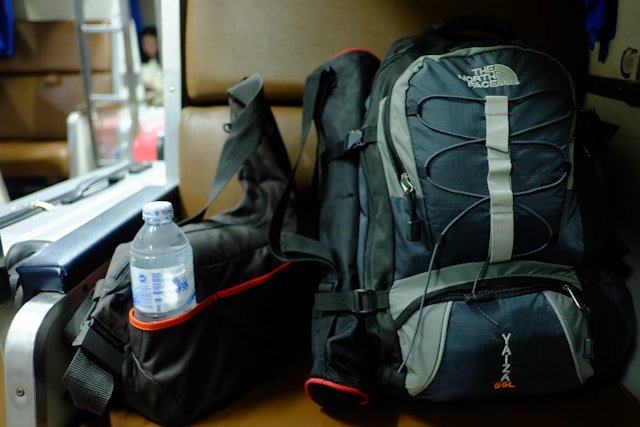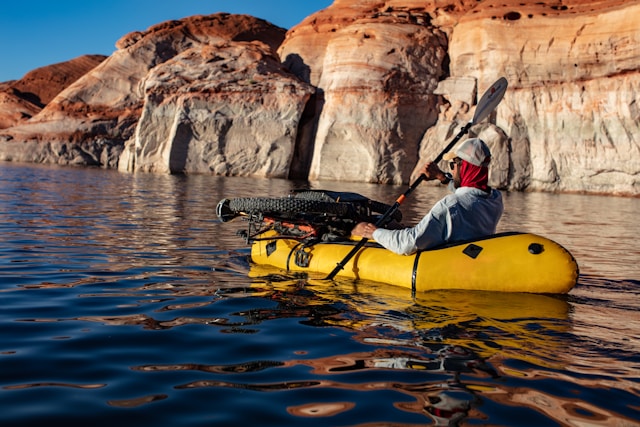Hey everyone, Anya here! So, you’re thinking about a multi-day packrafting trip? Fantastic! Combining backpacking and paddling is seriously one of the best ways to explore the backcountry. But let me tell you, it takes some solid planning. I’ve seen folks jump in without enough prep, and trust me, it’s not pretty. Let’s dive into what you need to consider, based on my experiences and, you know, a few hard-learned lessons along the way.
Route Planning: Know Before You Go
First things first: the route. It’s not just about picking a pretty river on a map. You’ve got to do your homework. Researching the waterways is essential. What’s the water level typically like this time of year? What class rapids are we talking about? Are there any portages? I always check multiple sources – guidebooks, online forums, and even call local ranger stations. They usually have the inside scoop. Oh, and don’t forget to factor in daily mileage. Be realistic about how far you can hike and paddle each day, especially with a loaded packraft. I remember this one trip in Montana…thought we could do 20 miles a day. Ended up crawling into camp after 12, completely exhausted. Lesson learned!
Food and Water: Fueling the Adventure
Okay, let’s talk sustenance. Food and water management are crucial. You’ll be burning a ton of calories, so pack accordingly. Dehydrated meals are your friend – lightweight and relatively easy to prepare. But don’t rely solely on them. Throw in some snacks like energy bars, nuts, and dried fruit. As for water, you’ll need a reliable source and a way to purify it. I personally prefer a water filter, but purification tablets are a good backup. And remember to stay hydrated! Seriously, dehydration can ruin a trip faster than you can say “bear attack.”
Navigation: Don’t Get Lost!
Alright, now, navigation. You absolutely need to know where you’re going. A map and compass are essential, even if you have a GPS device. Batteries die, devices fail…you get the picture. Learn how to read a topo map and use a compass. Practice before you go! I also like to mark campsites and potential hazards on my map. It gives me a good overview of the route and helps me stay oriented. And hey, a little tip: waterproof your map! Nothing worse than a soggy, unreadable map when you’re trying to figure out where to go.
Emergency Preparedness: Hope for the Best, Prepare for the Worst
This is where things get serious. Emergency preparedness. You need to be prepared for anything. A first-aid kit is non-negotiable. Make sure it’s well-stocked and that you know how to use everything in it. Carry a repair kit for your packraft. A puncture can happen at any time, and you don’t want to be stranded. A satellite communication device is also a good idea, especially if you’re going into remote areas. It allows you to call for help if something goes wrong. And don’t forget to let someone know your itinerary and when you expect to be back. Just in case.
Campsite Selection: Home Away From Home
Okay, let’s talk about setting up camp. Campsite selection is key for a good night’s sleep. Look for a flat, dry spot that’s protected from the wind. Avoid camping near water sources to minimize your impact on the environment. And always follow Leave No Trace principles. Pack out everything you pack in, and leave the campsite as you found it. Oh, and a pro-tip: a comfortable sleeping pad can make all the difference. Trust me, your back will thank you.
Gear Considerations: Pack Smart, Paddle Strong
Beyond the essentials, your gear choices matter. A lightweight tent is crucial. You’ll be carrying it, after all! A good paddle is worth the investment. It can make paddling more efficient and less tiring. And don’t forget a personal flotation device (PFD). It’s not just a good idea, it’s often the law. Make sure it fits properly and that you wear it at all times when you’re on the water. I’ve also found that dry bags are essential for keeping my gear dry. Nothing worse than waking up to a wet sleeping bag.
So there you have it! Planning a multi-day packrafting expedition takes time and effort, but it’s totally worth it. With careful planning and preparation, you can have an incredible adventure. Now, go out there and explore! And as always, be safe and have fun!




